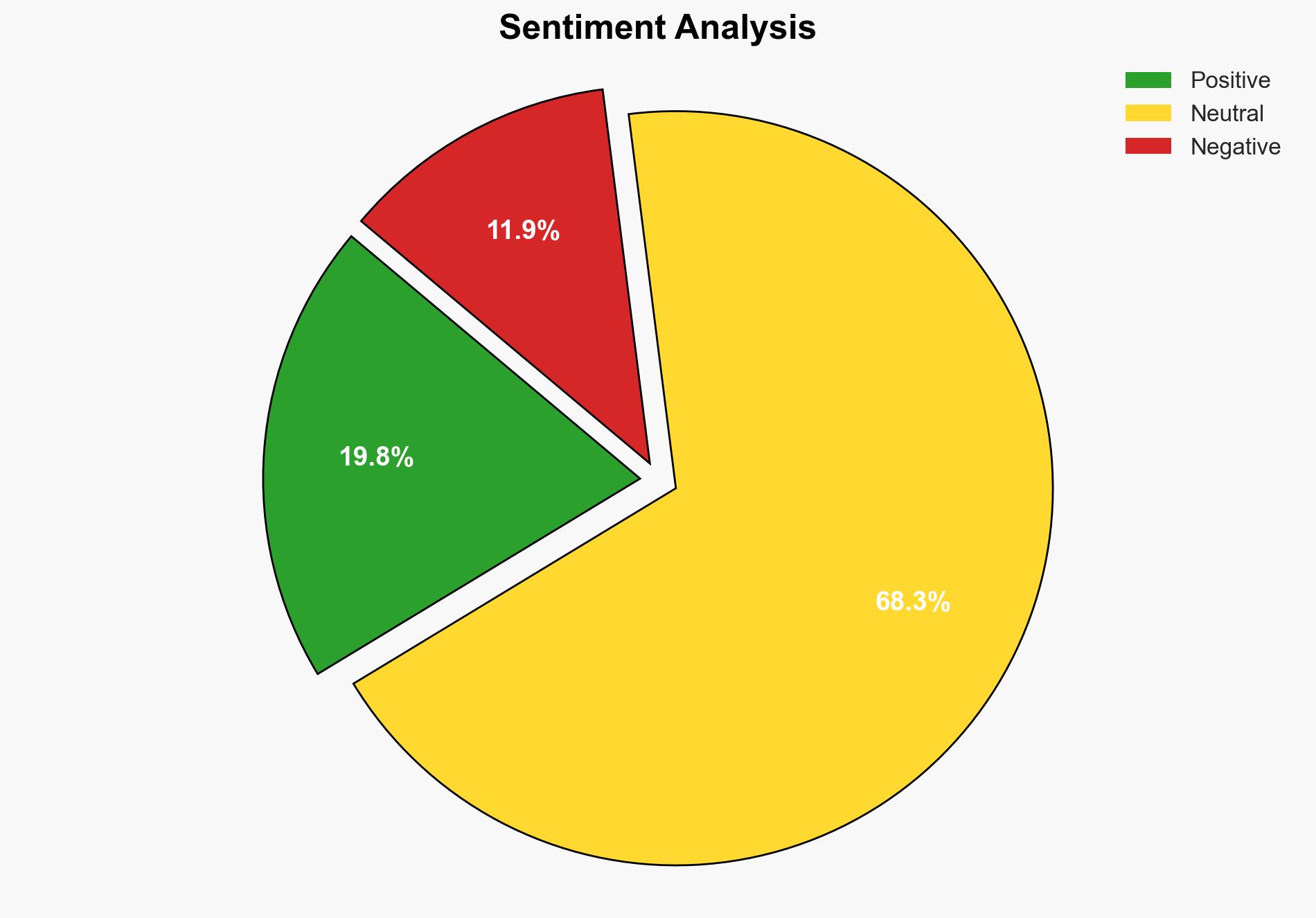Myanmars civil war How shifting US-Russia ties could tip balance and hand China a greater role – The Conversation Africa
Published on: 2025-03-28
Intelligence Report: Myanmars civil war How shifting US-Russia ties could tip balance and hand China a greater role – The Conversation Africa
1. BLUF (Bottom Line Up Front)
The ongoing civil war in Myanmar, exacerbated by shifting international alliances, poses significant risks to regional stability and global geopolitical dynamics. The strengthening ties between Myanmar and Russia, coupled with the potential for increased Chinese influence, could alter the balance of power in Southeast Asia. The United States’ strategic decisions regarding support for Myanmar’s opposition and its broader foreign policy could significantly impact the conflict’s trajectory and regional power structures.
2. Detailed Analysis
The following structured analytic techniques have been applied for this analysis:
General Analysis
The civil war in Myanmar, now in its fourth year, has resulted in thousands of casualties and widespread displacement. The conflict pits Myanmar’s military against a broad-based opposition, including ethnic minority groups and newly formed resistance forces. The military’s reliance on foreign support, particularly from Russia, has grown as international sanctions and diplomatic isolation take effect. Russia’s involvement includes granting rights to extract minerals in conflict zones and engaging in joint military exercises. This relationship provides Myanmar’s military with critical resources and international backing, while offering Russia strategic advantages in Southeast Asia.
3. Implications and Strategic Risks
The deepening ties between Myanmar and Russia, alongside potential Chinese involvement, present several strategic risks:
- Increased regional instability as foreign powers vie for influence in Southeast Asia.
- Potential escalation of the conflict if external support for Myanmar’s military continues to grow.
- Economic disruptions due to sanctions and resource extraction in conflict zones.
- Humanitarian crises resulting from prolonged conflict and displacement.
4. Recommendations and Outlook
Recommendations:
- Enhance diplomatic efforts to mediate and resolve the conflict in Myanmar.
- Strengthen support for humanitarian aid and refugee assistance in the region.
- Consider targeted sanctions and diplomatic measures to deter foreign support for Myanmar’s military.
- Promote regional cooperation to address security and economic challenges.
Outlook:
Best-case scenario: Successful diplomatic interventions lead to a ceasefire and negotiations for a political solution, reducing foreign influence and stabilizing the region.
Worst-case scenario: Escalation of the conflict with increased foreign military involvement, leading to widespread regional instability and humanitarian crises.
Most likely scenario: Continued low-intensity conflict with sporadic escalation, sustained foreign support for Myanmar’s military, and ongoing humanitarian challenges.
5. Key Individuals and Entities
The report mentions significant individuals and organizations involved in the conflict:
- Min Aung Hlaing
- Karen National Union
- Kachin Independence Army
- Arakan Army
- Ta’ang National Liberation Army
- Myanmar National Democratic Alliance Army
- People’s Defense Force
- Bamar People’s Liberation Army





